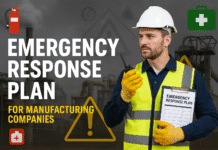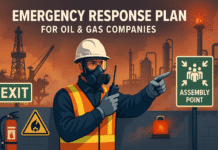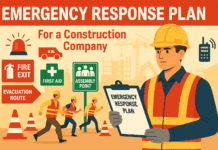
Introduction
Workplace Hazards and Precautions : In any workplace, the safety and well-being of employees should be a top priority. Workplace hazards refer to any potential danger or risk that could harm the employees’ health, safety, or overall well-being. Identifying and mitigating these hazards are crucial steps in ensuring a safe and productive work environment. This article delves into the concept of workplace hazards, the importance of identifying them, and the precautions that can be taken to minimize risks and promote workplace safety.
Workplace Hazards and Precautions: Ensuring Safety in Your Work Environment
Understanding Workplace Hazards
Definition of Workplace Hazards
Workplace hazards encompass a wide range of potential dangers that employees may encounter while performing their job duties. These hazards can vary depending on the nature of the work, the industry, and the specific tasks involved.
Common Types of Workplace Hazards
There are several common types of workplace hazards, including physical, chemical, biological, and psychological hazards. Physical hazards include risks related to slips, trips, and falls, ergonomic issues, electrical hazards, fire hazards, and exposure to noise. Chemical hazards involve exposure to hazardous substances that could cause health issues. Biological hazards pertain to exposure to viruses, bacteria, and other pathogens. Psychological hazards, on the other hand, are related to workplace stress, violence, bullying, and harassment.
Importance of Identifying Workplace Hazards
Ensuring Employee Safety
Identifying workplace hazards is essential for ensuring the safety and well-being of employees. By recognizing potential risks, employers can implement preventive measures and safety protocols to minimize accidents and injuries.
Legal and Regulatory Compliance
Failure to identify and address workplace hazards can lead to legal consequences. Regulatory authorities require employers to maintain a safe work environment and may impose fines or penalties for non-compliance.
Precautions to Minimize Workplace Hazards
Conducting Risk Assessments
Conducting regular risk assessments is a fundamental step in identifying workplace hazards. This process involves evaluating the workplace, its processes, and equipment to determine potential risks and vulnerabilities.
Providing Proper Training
Proper training is crucial for equipping employees with the knowledge and skills to recognize and handle potential hazards. Training programs should cover safety procedures, proper use of equipment, and emergency protocols.
Using Personal Protective Equipment (PPE)
Personal Protective Equipment (PPE) plays a vital role in safeguarding employees from various hazards. Employers must provide suitable PPE and ensure that employees use it correctly.
Implementing Safety Protocols
Having well-defined safety protocols is essential for preventing accidents and minimizing risks. Regular drills and reminders help reinforce safety practices throughout the workplace.
The Role of Employers and Employees in Mitigating Hazards
Employer Responsibilities
Employers hold the primary responsibility for providing a safe working environment. They should conduct regular inspections, invest in safety measures, and address employee concerns promptly.
Employee Responsibilities
Employees also play a critical role in minimizing workplace hazards. They should actively participate in safety programs, report potential risks, and adhere to safety guidelines.
Addressing Physical Hazards
Slips, Trips, and Falls
Slips, trips, and falls are common workplace accidents that can lead to severe injuries. Employers should keep walkways clear, use slip-resistant flooring, and encourage employees to wear appropriate footwear.
Ergonomic Hazards
Ergonomic hazards can result from poor posture and repetitive motions. Employers should invest in ergonomic furniture and educate employees about proper ergonomics.
Electrical Hazards
Electrical hazards pose significant risks in many workplaces. Employees must be trained to handle electrical equipment safely, and regular inspections of electrical systems should be conducted.
Fire Hazards
Fire safety is paramount in any workplace. Employers should have fire evacuation plans, provide fire extinguishers, and ensure that employees know how to respond to a fire emergency.
Chemical Hazards
Proper handling and storage of hazardous chemicals are essential to prevent exposure. Material Safety Data Sheets (MSDS) should be readily available, and employees should be trained in handling hazardous substances.
Handling Psychological Hazards
Stress and Workload
Stress and heavy workloads can have detrimental effects on employees’ mental health. Employers should promote work-life balance, encourage open communication, and provide resources for managing stress.
Workplace Violence
Preventing workplace violence involves creating a respectful and non-threatening work environment. Employers should have clear policies against violence and implement security measures if necessary.
Bullying and Harassment
Bullying and harassment can create a toxic work atmosphere. Employers must address complaints promptly, conduct awareness campaigns, and foster a culture of respect.
The Importance of Reporting Hazards and Incidents
Encouraging employees to report hazards and incidents is vital for continuous improvement in workplace safety. Reporting allows employers to investigate incidents, identify root causes, and implement preventive measures.
Creating a Safe Workplace Culture
Promoting a safe workplace culture involves fostering a sense of responsibility among employees and encouraging proactive safety practices. Regular safety meetings, incentives for safe behavior, and transparent communication contribute to a safety-conscious culture.
Conclusion
Prioritizing workplace safety is not only a legal obligation but also a moral duty. Identifying and mitigating workplace hazards can significantly reduce the risk of accidents and injuries, leading to a more productive and harmonious work environment.
FAQs
- Why is workplace safety crucial? Workplace safety is crucial as it ensures the well-being of employees, reduces accidents, and boosts productivity.
- What are the common physical hazards in workplaces? Common physical hazards include slips, trips, falls, ergonomic issues, electrical hazards, and fire hazards.
- How can employees contribute to workplace safety? Employees can contribute to workplace safety by participating in safety programs, reporting hazards, and following safety guidelines.
- What should employers do in the event of a workplace incident? Employers should investigate incidents, identify root causes, and take corrective actions to prevent similar occurrences in the future.
- How can employers address psychological hazards? Employers can address psychological hazards by promoting work-life balance, preventing workplace violence, and addressing bullying and harassment issues.
























